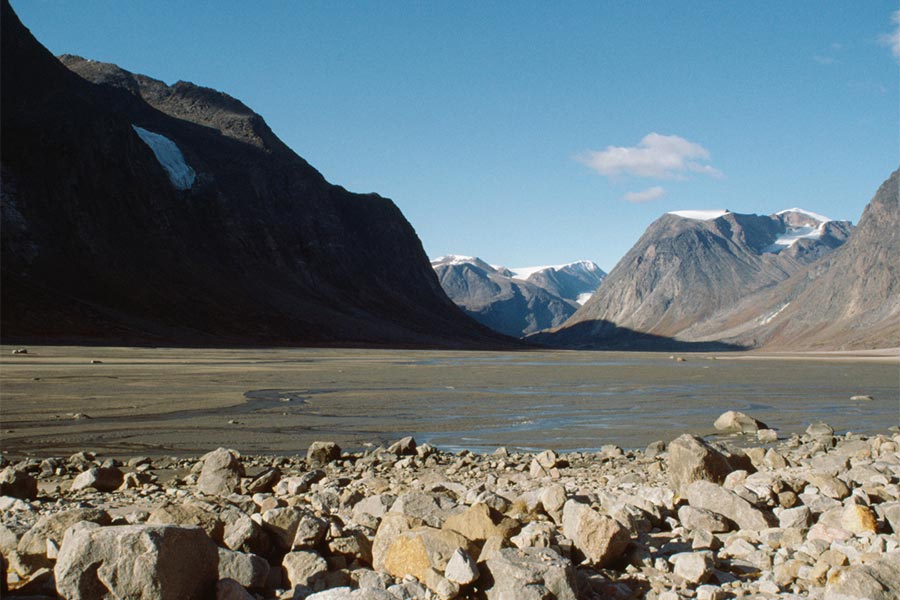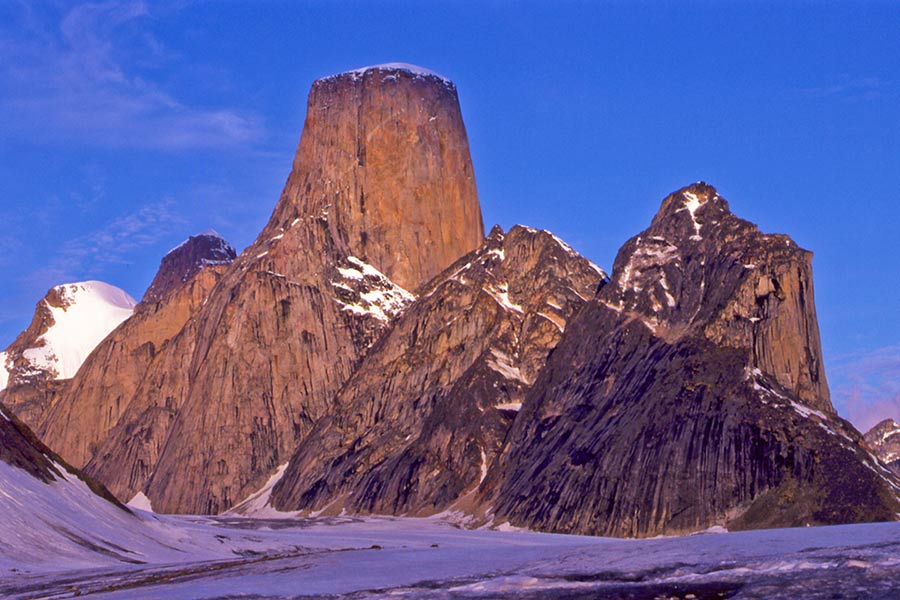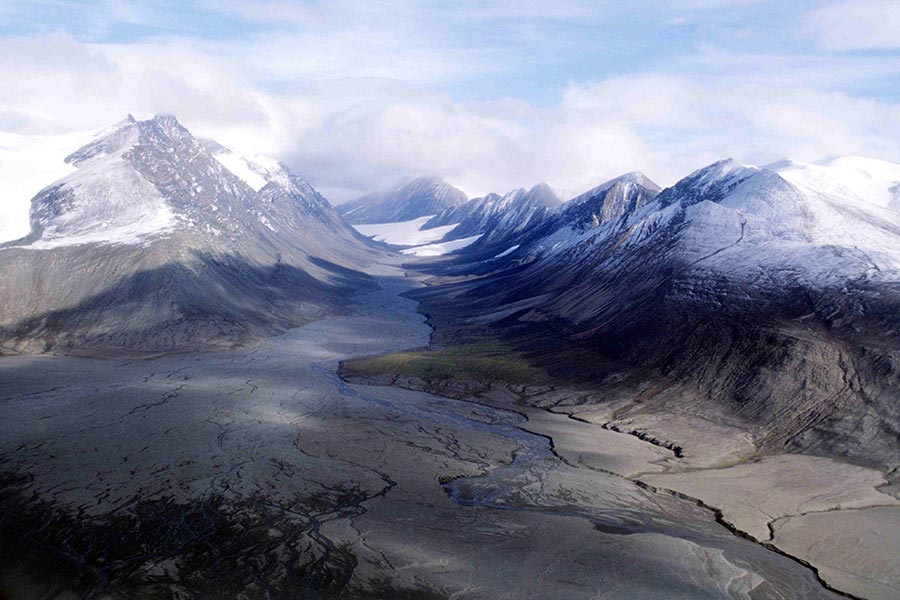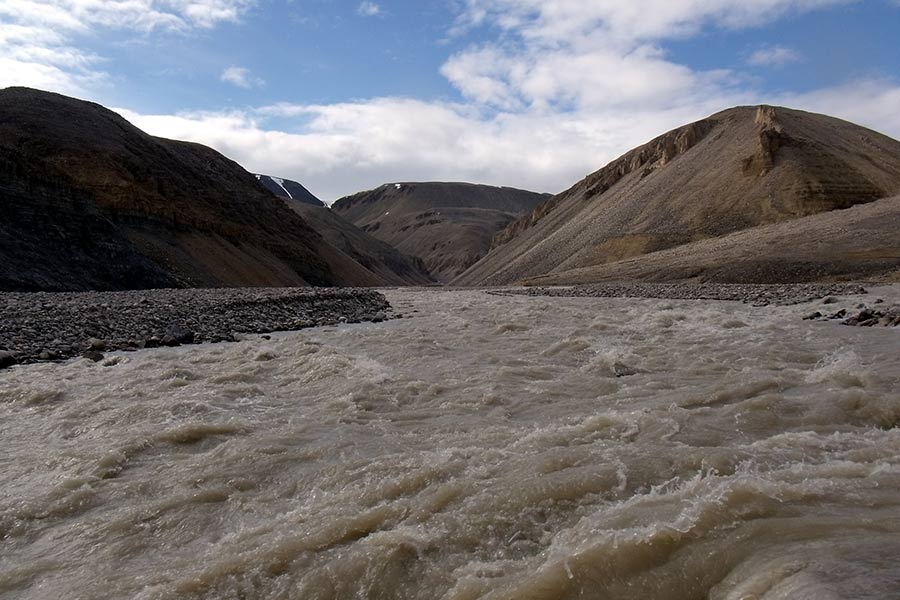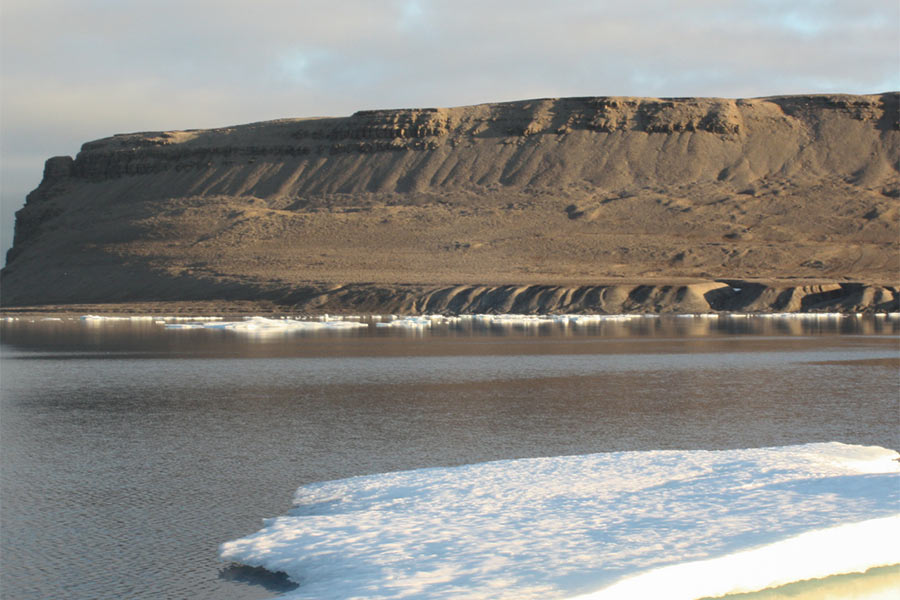Nunavut has cascading landscapes of white snow, mountainous glaciers, and if you're lucky, the aurora borealis.
Nunavut may be more obscure than British Columbia or Ontario. But there are many incredible tourist destinations in Nunavut.
What are the environmental wonders of Nunavut? How can you get to the territory? What are the leading attractions, and what can you do at them?
We answer these questions so you can learn about this incredible part of Canada. Here is your comprehensive guide.
Dichotomy of Nunavut
Nunavut covers almost two million square kilometres (roughly 770,000 square miles) of land. Its sheer size means that its natural landscapes and ecosystems are very diverse.
The northern half of Nunavut contains many small islands. These islands have extremely low temperatures and large glaciers. During the winter, daylight lasts for nearly 24 hours.
But the geography of Nunavut on the islands can differ substantially. The eastern islands tend to feature mountains while central and western islands contain flat tundras.
The mainland of Nunavut consists of tundra. Areas are rocky and bereft of plant life, though fish survive in the water.
Most parts of the territory are undeveloped. But you can find thriving residential communities even in the most remote areas of Nunavut. Alert is the northernmost continuously populated location in the world, home to researchers and military members.
A 2020 study examining Inuit perceptions of Nunavut's climate found that many residents feel threatened by climate change. Melting ice and extinct species have warped how people get food and connect with their spirituality.
The provincial government is developing ways to preserve natural ecosystems. You can help by picking up your trash and leaving habitats alone.
History
The Indigenous people of Canada inhabited mainland Nunavut roughly 4,500 years ago. Nunavut was inhabited relatively late in Canadian history due to its remoteness.
The Pre-Dorset people were the first to arrive. They spread out across the land and adopted a mobile lifestyle. They moved between settlements in order to gather different resources.
The Dorset culture developed around 500 BCE. The Dorset people invented tools like triangular blades. These tools helped them hunt large mammals like narwhals.
The Thule people started migrating into Nunavut from Alaska in the 11th century CE. The Dorset and Thule peoples initially kept their distance from each other.
But Thule communities began appearing in Dorset territories. The Dorset culture disappeared before 1500.
Around that time, the Thule began changing their culture. Nunavut was growing colder, so they had to adopt a migratory life based on local environments. Inuit societies emerged from Thule practices, prioritizing traditional knowledge and local practices.
European exploration of Nunavut began in the 10th century. But it did not start in earnest until the English arrived in the 16th century.
Europeans established a presence on Nunavut over the next two centuries. After the defeat of Napoleon in 1815, English settlers used Nunavut as a launching ground for Arctic exploration.
Some Inuit and European communities had trade ties with each other. Yet the Europeans uprooted thousands of Inuit, moving them to unfamiliar areas and spreading diseases amongst them.
Nunavut was initially grouped with the Northwest Territories. The two became separate territories in 1999. Nunavut is the only province or territory in Canada with an Inuit-majority population.
Getting Around Nunavut
Nunavut is an extremely difficult area to travel around. You need to plan out your travel arrangements properly before you go. You should also pack light to make transportation easier.
Location
Nunavut is directly north of Manitoba and east of the Northwest Territories. It is west of Hudson Bay.
Iqaluit is Nunavut's capital city and its only city. It lies on Baffin Island, which is east of the mainland of Nunavut. The city is north of Newfoundland and Labrador, so it may be easier to access it from that province.
Rankin Inlet is Nunavut's largest population center on the mainland. It lies on the western coast of Hudson Bay. The best places to live in Nunavut include Baker Lake and Gjoa Haven.
Transportation
Nunavut is the only Canadian territory that is not connected to a highway. There are roads within the territory, but they connect residences together.
If you want to come in from a province, you should fly in. Air Nunavut and Canadian North serve Iqaluit Airport with regular flights. You can also find various small airports and airstrips dotted around the territory.
Walking on foot through Nunavut is difficult. There are no paved sidewalks anywhere in the territory, not even in Iqaluit. While you are exploring Iqaluit, you should wear boots that grip ice and rocks well.
Most residents like to use snowmobiles and dog sleds to transport themselves. These are especially popular in the wintertime. You may want to practice using them before you travel to Nunavut.
1. Auyuittuq National Park
Auyuittuq National Park lies on Baffin Island. You can take a flight from Iqaluit to Pangnirtung, a small community near the park. You can then hire a boat to take you to the park itself.
You'll view a zig-zag skyline of granite peaks and shimmering glaciers that overlooks tundra valleys. This national park is home to narwhals and ringed seals. You'll get the real arctic experience at Auyuittuq!
Auyuittuq National Park Activities
Auyuittuq is one of the most remote national parks in Canada. There are no official campgrounds. But Parks Canada lets you camp in any location besides archaeological sites and wildlife habitats.
Once you acquire a permit, you can fish in any body of water. You are not allowed to collect plants, even edible ones. You can cook fish or meat inside the park, though you are not allowed to light fires.
There are no official hiking trails within Auyuittuq. Many guests like to hike in Akshayuk Pass, which runs amongst the Baffin Mountains.
Hiking in the pass is for experienced climbers only, as it can be easy to lose one's way. But hiking provides beautiful views of the mountain range and snaking rivers.
You can climb the Baffin Mountains and other mountains in the park. The harsh weather conditions and the rough terrain make them a challenge, even for experienced climbers.
Skiiers can ski within Akshayuk Pass. It is best to bring snowshoes for an easy climb to the ski slopes.
If you want something easy to do, you can go on a snowmobile tour. The tours run out of Pangnirtung and let you see fjords and mountains.
Inuit people can perform cultural activities like building cairns inside the park. If you are not Inuit, you may participate at the request of an Inuit person. You should otherwise leave Inuit cultural artifacts alone.
Safety Guidelines
Parks Canada controls who enters Auyuittuq. You must register with a local office and indicate what you plan on doing in the park. You must receive permits for any extensive activities such as fishing.
Auyuittuq lies inside the Arctic Circle. Temperatures are extremely cold, even during the summertime. Weather conditions can change rapidly, including snowstorms.
You must be prepared to take care of yourself in the park. You should bring extensive survival supplies, including a first-aid kit and a satellite phone.
Do not go to the park if you have a chronic medical condition like diabetes. If you get into a life-threatening situation, you may not be able to receive help in time.
2. Mount Asgard
Mount Asgard is a mountain within Auyuittuq National Park. It is famous for being a twin-peaked mountain. Asgard has two cylindrical rock towers that are more than 6,600 feet tall.
Climbing rock towers is not like climbing a solitary mountain. Towers are extremely steep and hard to grip. You have to climb up vertical rock faces in order to reach the top.
But Asgard can be a thrilling mountain to climb. When you stand on top, you can experience incredible views of the surrounding mountains. You can watch the sunset during the spring and fall.
Only experienced rock climbers and mountaineers should try climbing Asgard. There are very few tour guides who will take climbers up the mount due to how remote it is. Temperatures are frigid year-round, often dropping below zero.
You should bring warm clothing that does not impair your mobility. You should also bring plenty of food and water, as the mountain has no plant life or water sources.
3. Quttinirpaaq National Park
Quttinirpaaq is located on Ellesmere Island. The island is Canada's northernmost island and borders Greenland. You can access the park with a flight from Iqaluit to Resolute Bay.
The park is an area with massive ice caps that surround whole mountain ranges. You can find thick glaciers and watch the midnight sun during the summertime.
Quttinirpaaq is just as difficult a location as Auyuittuq. There are no established campgrounds or hiking trails within the park.
There are very few amenities for campers. Parks Canada has set up a group sleeper tent, a group kitchen, and pit toilets at Tanqury Fiord. Besides those resources, you are on your own to bring your supplies.
Many people hike the Muskox Way, which is a traditional migration route for the Inuit. The terrain is rocky, uneven, and difficult to navigate without help from an experienced guide.
You can climb on glaciers and up mountains. You must have the proper equipment in order to navigate the terrain. Parks Canada recommends you go with a certified guide in a group of experienced people.
Mountains provide ideal opportunities for skiing. You can find numerous peaks with smooth snow and clear ice. Consider going skiing during the spring, as the weather is more stable then.
You can use Quittinirpaaq as a launch point for a North Pole expedition. You must talk to park staffers before you do this. You should prepare to spend weeks travelling to the North Pole, as weather conditions can change.
The park offers some temporary volunteer opportunities. You can volunteer to be a chef, cooking for campers in a fully equipped kitchen.
4. Sirmilik National Park
Sirmilik is a park spread across a few islands in northern Nunavut. You can fly to the park from Iqaluit and arrive in Pond Inlet or Arctic Bay.
Sirmilik is another park in the Arctic Circle. You can find massive glaciers floating on the water and rolling mountain ranges.
Despite its remote location, it is an easier park for less experienced hikers. You can walk on Bylot Island while viewing glaciers. Day hikes can take guests to bird sanctuaries, letting them view geese in their natural habitats.
You can also view hoodoos, which are tall spires of rock that tower over the tundra. You can try climbing them, but they are difficult to grip. Consider taking pictures of them from the tundra.
People who don't want to hike can take water tours. They can also go kayaking, though the water is extremely cold.
You can find cultural sites for the Inuit throughout the park. Some Inuit communities continue to use the land for their sustenance. You can find educational resources on Inuit culture at Pond Inlet.
You must register with Parks Canada before you enter Sirmilik. You also must receive an orientation from a park official.
5. Beechey Island
Beechey Island is north of the mainland. Indigenous people lived on the island for thousands of years before Europeans arrived. The island was named after William Beechey, an English portrait artist.
Beechey Island became important to Europeans during the 19th century. Sir John Franklin launched his search for the Northwest Passage from the island in 1845. Arctic explorers from that point on began using the island, including Roald Amundsen.
Beechey is perhaps most famous for its graves. Three members of Franklin's expedition and another English explorer are buried on the island. You can visit the graves today, which are marked with bronze memorials.
The island is accessible through a boat ride. You can walk around the island and view natural features like mountains while learning the history of the graves.
Pack Your Bags and Head to Nunavut Today!
There are terrific tourist destinations in Nunavut. The territory features beautiful tundra's, glaciers, and mountain ranges. You can also find hubs for Inuit cultures that date back centuries.
You can reach Nunavut by plane and get around on snowmobiles. Attractions like Auyuittuq National Park are not accessible by car.
Nunavut is an incredible place for outdoor activities. You can go camping, hiking, and fishing at several national parks. Yet you should have experience and pack extensive supplies before you go.
You should also have insurance. Insurdinary lets you find great travel insurance. Compare quotes today.


